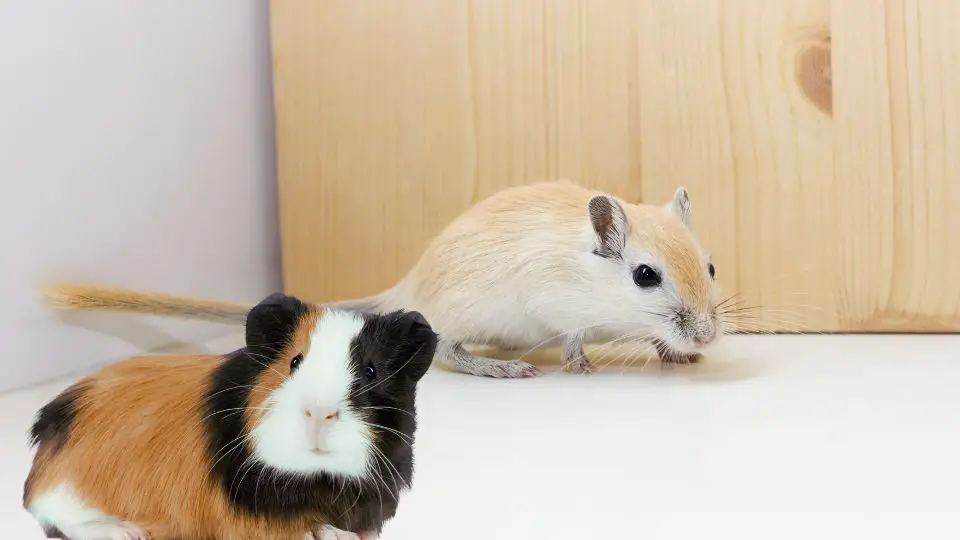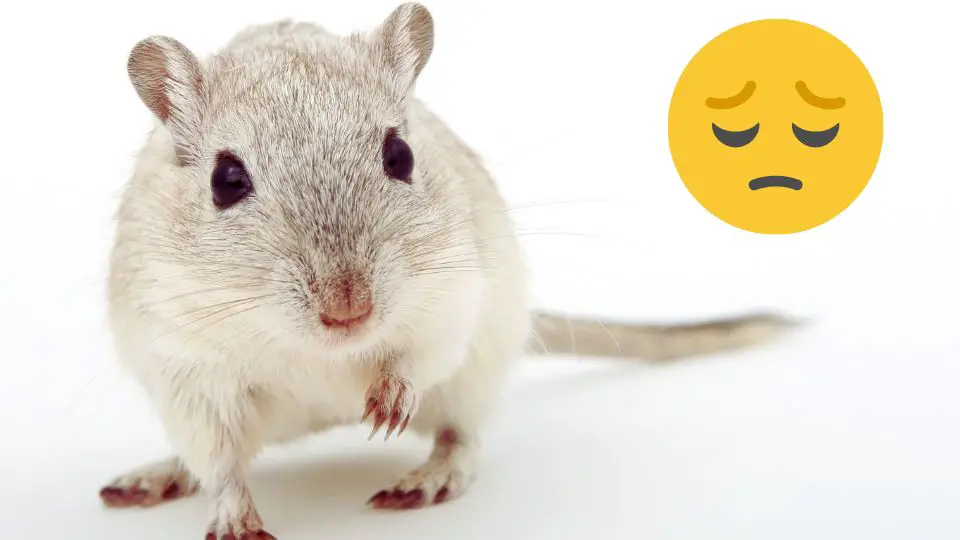Trimming gerbil nails is an important aspect of their grooming routine to ensure their comfort and well-being.
In this article, we will provide you with step-by-step instructions and valuable tips on how to trim your gerbil’s nails safely and effectively.
By following these guidelines, you can help prevent overgrowth and maintain optimal nail length for your furry friend.
Are you supposed to trim gerbils nails?
Yes, it is sometimes necessary to trim a gerbil’s nails. Gerbils, like many other small animals, have claws that can grow too long if not properly maintained. In the wild, gerbils wear down their nails naturally through digging and burrowing activities. However, in captivity, gerbils may not have the same opportunities to naturally wear down their nails, leading to overgrowth.
Regularly checking and trimming your gerbil’s nails can help prevent issues such as overgrown nails or nails that curl and cause discomfort. Trimming their nails can also reduce the risk of them getting caught on objects or causing injury to themselves or others during playtime.
Note that not all gerbils will require nail trims, as some may naturally wear down their nails through activities in their habitat. However, if you notice that your gerbil’s nails are becoming long or causing any issues, it may be necessary to trim them.
Gathering the Necessary Supplies
When it comes to trimming your gerbil’s nails, it’s important to have the right tools and supplies on hand. Here are the items you’ll need:
- Small animal nail clippers or human nail clippers with a straight edge: These clippers are specifically designed for trimming small animal nails and are easier to handle. If you don’t have small animal nail clippers, you can use human nail clippers with a straight edge as an alternative.
- Styptic powder or cornstarch (for accidental bleeding): Accidents can happen, and in case you accidentally clip the nail too short and it starts to bleed, styptic powder or cornstarch can help stop the bleeding. These substances promote clotting and can be applied to the bleeding nail tip.
- A small towel or cloth to secure the gerbil: It’s important to keep your gerbil secure and calm during the nail trimming process. Using a small towel or cloth, gently wrap the gerbil to prevent them from squirming or escaping. Ensure that the cloth is not too tight and allows for comfortable breathing.
Preparing the Environment
Creating a calm and comfortable environment is essential when trimming your gerbil’s nails. Here is what you need to do to ensure a stress-free experience:
- Find a location in your home where you can comfortably trim your gerbil’s nails without distractions or loud noises. Adequate lighting is crucial for better visibility during the process.
- Gerbils are sensitive creatures, so it’s important to make them feel safe and at ease. Keep their enclosure nearby during the nail trimming session to provide a familiar and secure environment. Covering the sides of their enclosure with a towel or cloth can help create a sense of security.
Techniques for Trimming Gerbil Nails
Trimming your gerbil’s nails requires patience, caution, and proper technique. Follow these steps to safely and effectively trim your gerbil’s nails:
Gently secure the gerbil using a towel or cloth
Wrap a small towel or cloth around your gerbil, ensuring that their body is gently and securely held. This helps keep them calm and prevents them from wriggling or escaping during the process.
Carefully extend each nail to check for the quick
Gerbil nails are translucent, making it easier to see the quick, which is the blood vessel inside the nail. Gently extend each nail to examine it and determine where the quick ends. Avoid cutting into the quick, as it can cause bleeding and discomfort.
Here are some tips:
- Use good lighting: Ensure you have adequate lighting to clearly see the translucent nature of the gerbil’s nails and locate the quick.
- Be patient and gentle: Take your time and handle your gerbil’s paws with care. Gently extend each nail without applying too much pressure to avoid causing any discomfort.
- Use a magnifying glass if needed: If you have difficulty seeing the quick, you can use a magnifying glass to get a closer look. This can help you identify the exact location where the quick ends.
- Trim small amounts at a time: If you’re unsure about the location of the quick or if your gerbil has dark-colored nails, it’s better to trim small amounts at a time. This way, you can gradually trim the nails while minimizing the risk of cutting into the quick.
- Have styptic powder or cornstarch on hand: Accidents can happen, and if you accidentally cut into the quick, having styptic powder or cornstarch readily available can help stop the bleeding. Apply a small amount to the bleeding nail and apply gentle pressure to promote clotting.
Trim the nails using the appropriate clippers
Extend each nail gently by applying light pressure to the pad of the gerbil’s paw. This will naturally cause the nail to protrude slightly, making it easier for you to see and access the nail for trimming.
When extending the nails, be mindful of your gerbil’s comfort and avoid putting excessive pressure on their paws. If your gerbil becomes agitated or shows signs of distress, it’s best to pause and give them a break before continuing.
By extending the nails, you can get a clearer view of the nail’s length and the position of the quick. This will help you determine how much of the nail to trim, ensuring you don’t cut into the sensitive quick. Remember, the goal is to maintain a safe and comfortable length for your gerbil’s nails without causing any harm or discomfort.
Be cautious and avoid cutting into the quick to prevent bleeding
Take your time and proceed with caution when trimming. Extend each nail slowly and observe the position of the quick. It is a small, pinkish area within the nail. Take care to trim only the clear, pointed part of the nail and avoid cutting into the quick. If you accidentally cut the quick and it starts to bleed, remain calm and be prepared to handle the situation.
Use styptic powder or cornstarch to stop bleeding if necessary:
Accidental bleeding may occur if you accidentally cut into the quick. If this happens, don’t panic. If bleeding occurs, apply gentle pressure to the affected nail using a clean cloth or towel. This can help stop the bleeding. Additionally, you can use styptic powder or cornstarch by applying a small amount to the bleeding nail. These substances help promote clotting and stop the bleeding. If the bleeding persists or if you’re unsure how to handle it, contact a veterinarian for guidance.
Aftercare and Comfort
After the nail trimming session, it’s important to provide aftercare and ensure your gerbil feels comfortable and secure. Here are some steps to follow:
- Reward with treats and positive reinforcement: Offer your gerbil a small treat or praise them for their cooperation during the nail trimming session. This helps create a positive association with the experience and reinforces good behavior.
- Monitor for signs of discomfort or bleeding: Keep a close eye on your gerbil’s nails and paws after trimming. If you notice any signs of bleeding, swelling, or discomfort, gently examine the area and provide appropriate care. If the bleeding persists or if you have any concerns, consult a veterinarian for further assistance.
- Offer a cozy and secure environment: Create a comfortable space for your gerbil to recover. Provide a soft bedding material in their enclosure and ensure the area is quiet and free from any potential stressors. This allows your gerbil to rest and recuperate after the nail trimming session.
Tips and Precautions
Trimming your gerbil’s nails is an important part of their grooming routine. Here are some tips and precautions to keep in mind:
- Gradually introduce nail trimming: If your gerbil is not used to having their nails trimmed, introduce the process gradually. Start by gently handling their paws and providing positive reinforcement. This helps them become familiar with the sensation and reduces stress.
- Seek professional help if unsure or uncomfortable: If you’re unsure about how to trim your gerbil’s nails or feel uncomfortable doing it yourself, it’s best to seek assistance from a veterinarian or a professional groomer. They have the experience and knowledge to safely trim your gerbil’s nails and can provide guidance on proper techniques.
- Regularly monitor and trim nails: Regular nail trimming is important to maintain optimal nail length. Monitor your gerbil’s nails regularly and trim them as needed. Be observant of any signs of overgrowth, such as nails curling or causing discomfort when walking. Trim the nails gradually, taking care not to cut into the quick.
- Use appropriate tools and techniques: Use small animal nail clippers or human nail clippers with a straight edge. Ensure the clippers are clean and sharp to make clean cuts. Trim only the tip of each nail, avoiding the quick. If your gerbil has dark-colored nails, shine a light through them to locate the quick.
- Stay calm and be gentle: Approach nail trimming with a calm and gentle demeanor. Speak softly to your gerbil and handle their paws gently. If your gerbil becomes stressed or anxious, take a break and try again later.
Conclusion
Regular nail trims are an essential part of gerbil care to promote their overall health and prevent any discomfort or complications. By following the techniques outlined in this article and taking the necessary precautions, you can confidently and safely trim your gerbil’s nails.
Remember to be patient, reward your gerbil with treats and positive reinforcement, and seek professional help if needed. With proper nail care, your gerbil can enjoy a happy and comfortable life.







